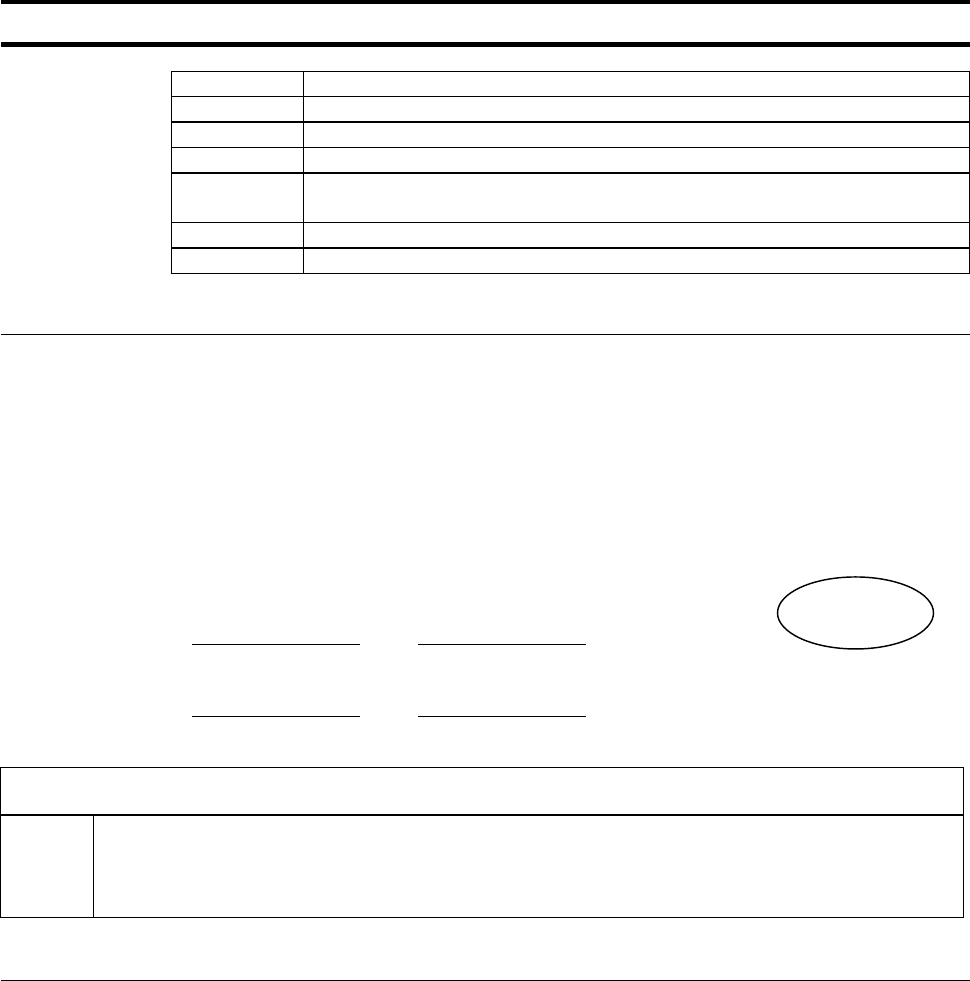
E6581315
17
4.2. Commands
Here are the communication commands available.
Command Function
R command Reads the data with the specified communication number.
W command Writes the data with the specified communication number. (RAM and EEPROM).
P command Writes the data with the specified communication number. (RAM).
G command
Reads the data with the specified communication number. (For binary mode only.
Dummy data is required for this command.)
X command Block communication (Computer -> Inverter)
Y command Block communication (Inverter -> Computer)
W (57H) (RAM
*1
/EEPROM
*2
write)
This command is used to write new data into the parameter specified using it communication num-
ber. It writes data into the RAM and EEPROM. For parameters whose settings cannot be stored in
the EEPROM (e.g., parameter with the communication number FA00), the W (57H) command writes
data into the RAM only. It cannot be used to write data into read-only parameters (e.g., parameter
with the communication number FD?? or FE??).
Each time an attempt to write data is made, the inverter checks if the data falls within the specified
range. If this check reveals that the data falls outside the specified range, the inverter will reject it
and return an error code.
- Ex.: Setting the deceleration time (communication number: 0010) to 10 sec.
<ASCII mode>
Computer → Inverter Inverter
→ Computer
(W00100064)CR (W00100064)CR …(10÷0.1=100=0064H)
<Binary mode>
Computer → Inverter Inverter
→ Computer
2F 57 00 10 00 64 FA 2F 57 00 10 00 64 FA …(10÷0.1=100=0064H)
Notice
♦ Do not write the same parameter to the EEPROM more than 10,000 times. The life time of EEPROM is
approximately 10,000 times.(Some parameters are not limited, please refer to the “9.Parameter data “)
The lifetime of EEPROM is approximately 10,000 times. When using the TOSHIBA inverter protocol and
the data does not need to be records, use P command (the data is written only to RAM).
Explanation of terms
*1: The RAM is used to temporarily store inverter operation data. Data stored in the RAM is cleared
when the inverter is turned off, and data stored in the EEPROM is copied to the RAM when the
inverter is turned back on.
*2: The EEPROM is used to store inverter operation parameter settings, and so on. Data stored in
the EEPROM is retained even after the power is turned off, and it is copied to the RAM when the
inverter is turned on or reset.
CR: Carriage return
efesotomasyon.com -Toshiba inverter,drive,servo,plc


















